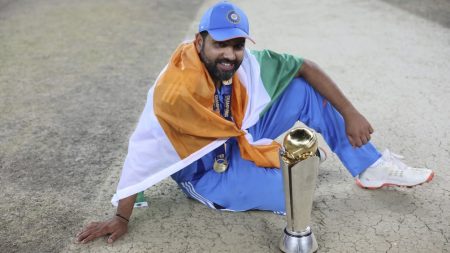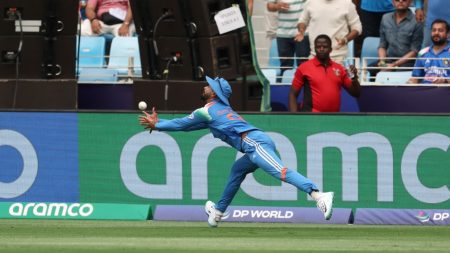A Benchmarked Batting Lineup
India’s current batting lineup is being hailed as one of the most formidable in recent cricket history. Team vice-captain Shubman Gill asserts that this lineup is the best he has ever been a part of, emphasizing the depth and quality of talent across the board. The batting order is a blend of seasoned veterans and rising stars, each contributing significantly to the team’s success. At the helm are Rohit Sharma and Virat Kohli, two of the all-time greats in One Day Internationals (ODIs). Rohit, known for his consistency and aggression as an opener, and Kohli, celebrated for his unmatched technique and mental strength, set a formidable foundation. Gill, who bats between these two giants, is in excellent form, and the support cast includes Shreyas Iyer, KL Rahul, Hardik Pandya, and Ravindra Jadeja. This combination of talent and form has given India a robust and versatile batting lineup that can adapt to various conditions and pressures.
Depth and Form in Dubai
Despite the challenging conditions at Dubai, a venue known for lower scores in the tournament, each of India’s top seven batsmen has managed to register scores of over 40. Jadeja, who usually bats at No. 8, has only been required to bat twice in four games, a testament to the strength of the top-order. Gill highlights that the depth in the batting lineup has a significant psychological impact on the top-order players, allowing them to play more freely and without the intense pressure to score heavily every time. This depth has not only helped in reducing the burden on the top-order but has also provided the team with a buffer, ensuring that even if a player has an off day, there are others who can step up and fill the gap. This collective form and depth have been a crucial factor in India’s success in the Champions Trophy.
Gill’s Perspective on Batting Freely
For Gill, batting more freely does not translate to taking more risks; instead, it is about being smart and opportunistic. "I honestly don’t really think about whether I need to take more risks or less risks," Gill explained. "It’s more about being in my zone and taking calculated risks. I take more risks at the right point, when I feel the bowler is under pressure." Gill’s approach is instinctive rather than pre-planned. He focuses on staying in his zone, which means preparing with match intensity and playing as he would in a real game. This mental and physical preparation helps him stay calm and composed, even in high-pressure situations. Gill’s philosophy is rooted in the belief that while hitting boundaries and sixes is important, the small things like taking singles and managing the run rate are equally crucial. This holistic approach to batting helps him stay consistent and effective.
Staying in the Zone
Gill’s concept of being in his zone involves a lot of preparation and mental clarity. "Whenever I’m batting in the nets, I feel for me it’s about me trying to play as close to as how I would play in the match. And that is the zone for me," he elaborated. Gill emphasizes the importance of replicating match conditions during net practice. This includes not just the physical aspect of hitting the ball well but also the mental aspect of thinking about the game situation. He often contemplates scenarios where hitting boundaries might be challenging and focuses on how to accumulate runs through singles and doubles. This preparation helps him stay grounded and focused when facing tough bowling spells in actual matches. Gill believes that the ability to execute these small things consistently is what sets apart successful batsmen from the rest.
The Importance of Small Things
Gill recognizes that while hitting boundaries and sixes is exciting and easy, the small things like taking singles and managing the run rate are often more challenging and require more skill. "I think it’s easy to hit boundaries. It’s easy to hit sixes. But doing these small things are, I think, more difficult. And that’s why it requires a lot of repetitions for me," he said. Gill spends a significant amount of time practicing these finer aspects of the game, knowing that they can make the difference between a solid performance and a standout one. His approach is to build a strong foundation through consistent practice and then adapt to the game as it unfolds. This blend of preparation and adaptability has been a key factor in his success and his ability to contribute effectively to the team’s cause.
A Team Effort
The collective success of India’s batting lineup in the Champions Trophy is a testament to the team’s unity and synergy. Each player, from the top order to the lower middle order, contributes to the team’s overall performance, creating a balanced and formidable unit. The depth in the batting lineup allows the team to be more flexible in their strategy, knowing that they have multiple options to exploit different situations. This confidence and support from within the team have not only boosted the individual performances but have also strengthened the team’s overall performance. As Gill put it, the depth in the batting lineup has helped free up the top-order players, allowing them to play more freely and without the added pressure of scoring heavily every time. This well-rounded approach has been a significant factor in India’s success in the tournament.











